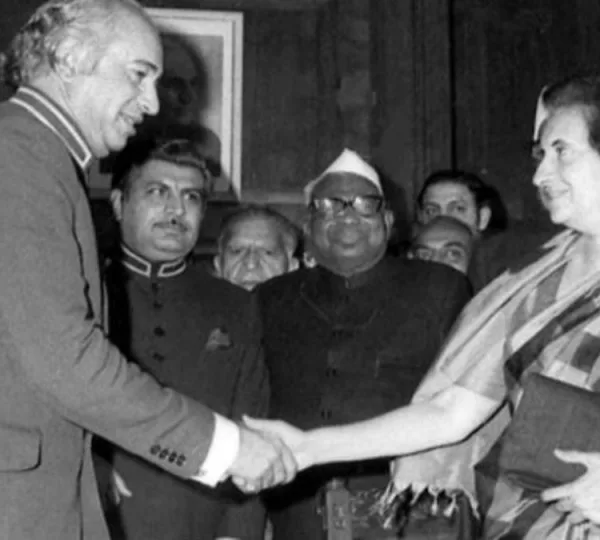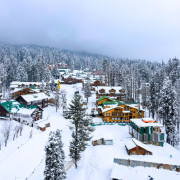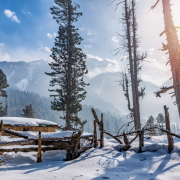
Kashmir: A Brief History
Where is Kashmir?
Located in the Northwestern Indian subcontinent, history of Kashmir has long been a region of intrigue and conflict. Bordered by China, Tibet, India, Pakistan, and Afghanistan, its strategic location has made it a focal point in the geopolitical chessboard of South Asia.
The land itself is a study in contrasts. With its rugged Mountains, Deep Valleys, and High Plateaus, It offers breathtaking natural beauty. Yet, Decades of turmoil and strife have marred this serene landscape.
Legends and Origins of Kashmir
The history of Kashmir is shrouded in legends and myths. According to folklore, it was an ascetic named Kashyapa who reclaimed the land from a vast lake, giving birth to the region we now know as Kashmir. However, its historical journey is far more complex than folklore suggests.
Buddhism, introduced by the Mauryan emperor Ashoka in the 3rd century BCE, left an indelible mark on Kashmir’s cultural landscape. Meanwhile, Over the centuries, it evolved into a thriving centre of Hindu culture, making the Place a melting pot of diverse traditions.
The Muslim Period in Kashmir
In 1346, Kashmir fell under Muslim rule, marking a significant turning point in its history. For nearly five centuries, the region remained under Muslim influence until it was annexed by the Sikh kingdom of Punjab in 1819. Subsequently, it became part of the Dogra kingdom of Jammu in 1846, shaping the Kashmir of the modern era.
The Birth of a Princely State
The Kashmir we recognize today began to take shape in 1846. Through the treaties of Lahore and Amritsar, Raja Gulab Singh, the Dogra ruler of Jammu, was declared the maharaja of an extensive Himalayan kingdom. Moreover, This strategic move by the British was aimed at safeguarding their northern flank in their advance toward the Indus and beyond.
The Partition Predicament

Maharaja Hari Singh
So, as the British withdrew from South Asia in 1947, they left behind a complex legacy in Kashmir. The partition of the Indian subcontinent granted princely states the right to choose between India, Pakistan, or independence. Maharaja Hari Singh of Kashmir’s indecision led to a series of events that ultimately resulted in the state’s accession to India in 1947.
However, this decision was met with opposition from Pakistan, which saw Kashmir as an extension of its territory. The ensuing conflict and the involvement of Pashtun tribesmen set the stage for a lasting dispute.
The Line of Control
Following localized warfare in 1948 and a cease-fire mediated by the United Nations, the line of control was established in 1949, dividing the Land between India and Pakistan. Despite its temporary nature, this partition still exists today, serving as a constant reminder of the unresolved conflict.

The Shimla Accord in 1972
Attempts at Resolution
Over the years, numerous attempts have been undertaken to resolve the Kashmir dispute.. However, tensions between India and Pakistan remained high, with the situation escalating during the 1962 Sino-Indian war and the 1971 India-Pakistan conflict that led to the creation of Bangladesh. The Shimla Accord in 1972 provided a glimmer of hope but did not bring a lasting solution.
Insurgency and Counterinsurgency in Kashmir
By the late 1980s, disillusionment with the democratic process led to the emergence of militant organizations in Kashmir. Their goal was to resist Indian control, resulting in a full-blown insurgency by the early 1990s. India responded with a crackdown campaign, leading to a protracted period of violence and unrest.
Recent Developments
Recent years have witnessed significant changes in the status of Kashmir. So, In August 2019, India took dramatic steps to assert its control over the region. It revoked the special autonomy of Jammu and Kashmir by Breaking Article 370 and reorganized the state into two union territories ( Jammu and Kashmir, and Ladakh ). These actions, met with both support and criticism, further complicated an already volatile situation.
Kashmir: A Land Marked by Complexity
Kashmir’s history is a testament to the intricate interplay of geopolitics, culture, and territorial disputes. While its natural beauty remains unparalleled, the region’s enduring conflict serves as a stark reminder of the challenges that persist in finding a lasting solution to the Kashmir issue.
Recent Posts
Kashmir in Autumn: Discover the Valley’s Golden Glory
Gulmarg in Winter: A Snowy Paradise
Top Adventures in Pahalgam, Kashmir!
All Categories

Thailand





